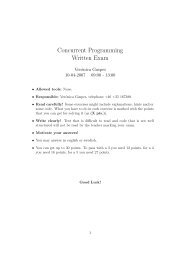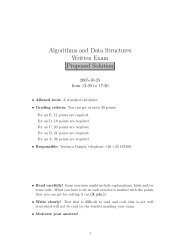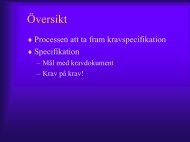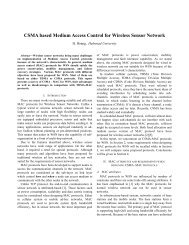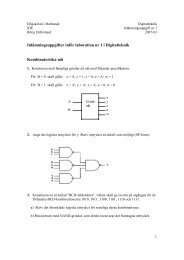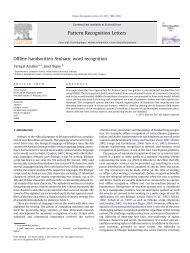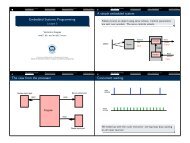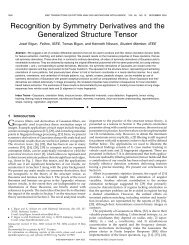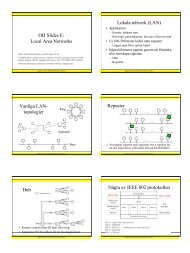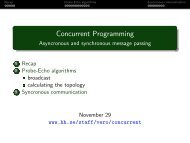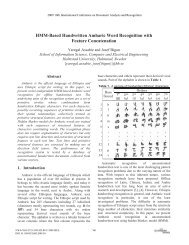Embedded Systems Programming Written Exam
Embedded Systems Programming Written Exam
Embedded Systems Programming Written Exam
Create successful ePaper yourself
Turn your PDF publications into a flip-book with our unique Google optimized e-Paper software.
3. (3 pts.) In the following fragment from laboration 2 there is a critical<br />
section. Identify it, explain what may happen, give an example of incorrect<br />
behaviour and solve the problem using a mutex.<br />
#include "tinythreads.h"<br />
int pp;<br />
void writeChar(char ch, int pos); // defined elsewhere<br />
int is_prime(long i);<br />
// defined elsewhere<br />
void printAt(long num, int pos) {<br />
pp = pos;<br />
writeChar( (num % 100) / 10 + ’0’, pp);<br />
pp++;<br />
writeChar( num % 10 + ’0’, pp);<br />
}<br />
void computePrimes(int pos) {<br />
long n;<br />
for(n = 1; ; n++) {<br />
if (is_prime(n)) printAt(n, pos);<br />
}<br />
}<br />
int main() {<br />
spawn(computePrimes, 0);<br />
computePrimes(3);<br />
}<br />
4. Using Tinytimber you can organize programs with reactive objects while<br />
programming in C. As a programmer you have to follow some conventions<br />
and Tinytimber guarantees that the methods of a reactive object are executed<br />
strictly sequentialy, thus protecting the local state of the object from<br />
critical section problems.<br />
(4 pts.) Program a class for reactive objects that can be used to protect<br />
(or encapsulate) an array of integers. The array to be encapsulated can be<br />
provided on object initialization. Let the type introduced for the class be<br />
Array. Then, the methods that have to be provided are<br />
3



